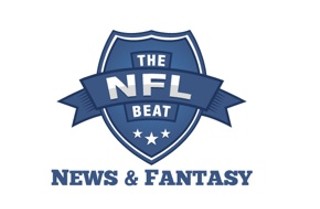'The NFL Beat': Punt in an Elevator
Punting it up while we're going down
By Alex Dunlap, 9:00PM, Thu. Jun. 21, 2012

Picture yourself stuck in an elevator. Not just any old elevator. An elevator teetering between the ninth and 10th floors of a maximum security prison for the criminally insane.
All power has been lost. You occupy this small, horrifying space with an inmate who seemed thoroughly sedated, but who has used this diversion to break free of his protective harness. Helpless, unarmed, and startled, you watch as he stabs his transport nurse in the neck with a 30ml syringe of deadly 600mg morphine.
He turns his murderous, twitching gaze to you, and you find yourself defenseless. Without notice, you are pressed against the wall by a force that seems far too powerful to be contained within your assailant's slight, sickly frame. A disgusting, yet somehow familiar smell washes over your entire being, and all you can think about it is the day you dissected a fetal pig in high school.
Flashing emergency lights. Sudden chaos. Your new elevator-mate spits erratic nonsense through gritted teeth, producing a thick yellow oozing spittle. "Undoubtedly a side effect of the sedative," a far-off, still-rational part of your brain decides. Some of the revolting snot-spray gets caught on his matted facial hair, but mostly just becomes a sticky, unwelcome addition to the beads of sweat forming on your own facial pores.
And as suddenly as this hellish experience started, the lights flash on. You hear sounds from above. Comforting sounds of the outside world. People yelling about generators and loudly tinkering with whatever may have gone bad. The overhead hatch opens and you can sense your terrifying experience coming to an end as help arrives.
I am that help. Let me teach you about the NFL punt.
Some people say that we don't need the punt. Renowned University of California economics professor David Romer has actually done a very eye-opening study on this. If you look at "punting on fourth down" as a set of averages over time as opposed to single, mutually exclusive acts, you will find that the math says a team is better off to never punt. Seriously. Never.
The problem is, in the life of an NFL coach, it is "what have you done for me lately?" Public perceptions change from week to week, day to day, play to play. Far from a set of abstract averages. Each decision feels like life or death, not a variable in an equation. If a coach goes for it on fourth down and turns over the possession, fans will scream "What in the world is he doing?! We are on our own 35-yard line!!"
We have grown to learn about, play, and teach football in a very certain way. No amount of mathematical mumbo-jumbo will be capable of answering the media onslaught a losing coach faces during the post-game press conference. Certainly not mathematical mumbo-jumbo that is taken as a long-term average. There is no such thing as "long-term" when planning an NFL career. Not as a coach or a player. It is minute to minute, and hopefully you can hang on for a nice ride.
As Dr. Romer was busy crunching numbers for his study, another Golden Bear was learning how to absolutely crush punts. Bryan Anger. The first punter taken in the Top 100 picks of the NFL Draft since Todd Sauerbrun in 1995. A lanky, six-foot-four embodiment of what NFL scouts call "the next Ray Guy."
As surprised as most were on draft night when the Jacksonville Jaguars selected Anger with their third-round pick, it was no shock to Anger's representation. They knew there were between five and seven teams who were ready to pull the trigger on the talented kicking phenom in round four. Jacksonville obviously knew this as well.
Anger has been coached since high school by Chris Sailer of Chris Sailer Kicking. Chris has coached many of the best and brightest kicking, punting, and long-snapping talents in the NFL today. When he tells you a kid is as special as he tells me Anger is, your ears perk up. Chris says that the day he met Bryan Anger, he told him that he should never kick another ball off in his life. And he didn't.
"Kickers are a different animal." Sailer, who was a two-time All-American himself at UCLA, told the Chronicle. "It's not about being athletic, because kickers are athletic. It is just a different kind of athletic. Bryan's size, the way the ball comes off his foot, how quickly it comes off his foot. That size and flexibility. Those types of bodies don't come often. He's one of a kind. He clocks consistent six-plus second hang times."
Now we tap the brakes and think. Six seconds. A six-second hang time means the ball is in the air for six seconds from the time it leaves the punter's foot until the time it hits the ground or is fielded by a returner. What does that mean to a punting unit? The short answer: everything.
In 2011, the longest hang time recorded all season by a starting punter was when Pat McAfee of the Colts boomed a monster that stayed in the air for 5.6 seconds. All season. 5.6 seconds.
How important is each 10th of a second in a punt's hang time? Easy. About as important as every 10th of a second in a special teams gunner's 40-yard-dash time. The reason being, the best scenario in a punt situation is to have your "gunners" (lined up at the WR positions) overcome blocking to get close enough to the returner to either make him fair-catch the ball, or at least be in position to attempt a high-percentage tackle before the returner has the ability to gain return yards. Four-tenths of a second does not sound like much until you think to yourself, "Would I rather have a gunner who runs a 4.4 40 cover this punt, or a gunner with runs a 4.8?" In this context, those four-tenths of a second seem monstrous.
That is the difference between Bryan Anger's "average" punt and the best NFL punt of 2011. Which brings us to Jacksonville.
To say the Jaguars struggled in the punting game in 2011 would be an understatement. As a team, they punted an even 100 total times which was the third most in the league. Jacksonville had two primary punters in 2011. Nick Harris and Matt Turk. Of the 44 players who punted at least one football in 2011, these two graded out at No. 38 and No. 43 respectively in average yards per punt. Horrible.
They were also the league's worst in pinning their opponent within their own 20-yard line. To be honest, they might as well have just gone for it like the math says. If you are punting to win the field-position battle, Jacksonville lost the battle, and ultimately the war.
If you look at the numbers, though, Jacksonville's coverage unit was actually very good. Despite having to punt so much, they allowed among the fewest return yards per punt in the league, checking in among the Top 10% of all clubs at approximately 3.5 yards per return. What makes this stat even more revealing is to look at it more deeply. It wasn't like the opposing team didn't ever have a chance to return the punt. Even though Nick Harris was at the bottom of basically every other statistic, he was among the Top 10 NFL punters in percentage of kicks returned.
And it all makes sense. Jacksonville has been known for years as a team that has accumulated fast, athletic receivers that have never really "caught on" to an offensive playbook. These elite physical talents were utilized in the punt-coverage game; an instinctive, repetitive, easy assignment: Run down the field. Get there before the ball does. Do not let a return occur. Easy. Jason Hill, Kassim Osgood, and other freakish Jaguar WRs who just couldn't figure out the offense come to mind.
In 2011, Jacksonville was a great punt-coverage team that needed a great punter. Now they have one. New Jags owner Shahid Khan is the Most Interesting NFL Owner in the World. He doesn't always draft punters in the third round, but when he does, he prefers the next Ray Guy.
[Alex Dunlap (follow on Twitter) is a member of the Pro Football Writers of America, the host of RosterWatch on 104.9FM ESPN Radio Austin, founder of Rosterwatch.com, and a featured expert contributor to the FantasyPros.com network.]
A note to readers: Bold and uncensored, The Austin Chronicle has been Austin’s independent news source for over 40 years, expressing the community’s political and environmental concerns and supporting its active cultural scene. Now more than ever, we need your support to continue supplying Austin with independent, free press. If real news is important to you, please consider making a donation of $5, $10 or whatever you can afford, to help keep our journalism on stands.
May 22, 2013
Bryan Anger, Jaguars, Punting, Statistics








